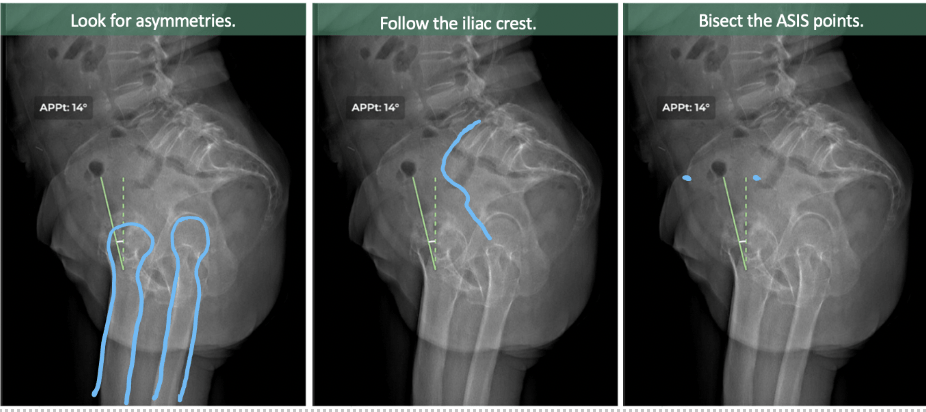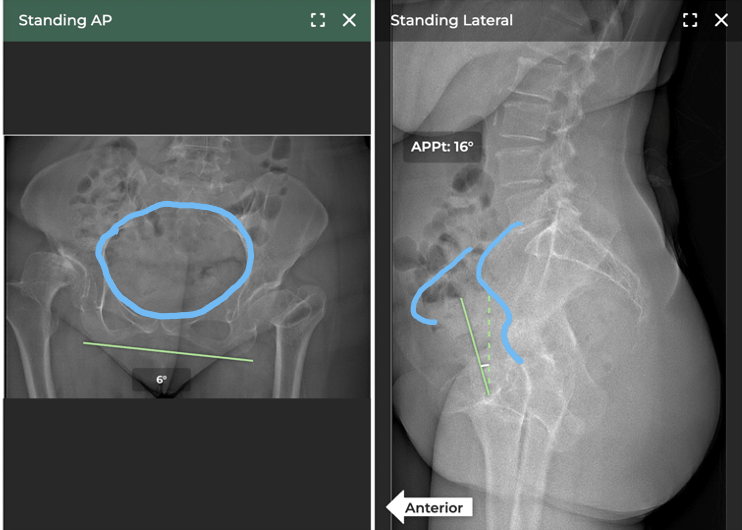
Blog by Samantha Huiskamp
If you’re using Intellijoint VIEW for hip-spine analysis, you know how important it is to have good quality imaging for identifying spinopelvic landmarks. Our imaging protocol helps ensure proper patient positioning, but sometimes, external factors can still get in the way of important landmarks. For those times when your imaging is less than ideal, I’ve worked with our clinical scientist, Emily McIntosh, and VIEW clinician, Dr. Russell Bodner, to put together these tips for identifying anatomical landmarks in VIEW.
Tip #1: Look for any asymmetries
When defining pelvic tilt, it’s important to bisect the two ASIS points on the standing lateral image. In some cases, the ASIS points will be perfectly symmetrical and appear as one, but it is much more likely that there will be some axial rotation. If you can’t clearly see two ASIS points, look for other clues of axial rotation in the acetabula and femurs.
If you can see two distinct native acetabula, there is axial rotation in your image, and you should also be looking for two distinct ASIS. It should also be noted that while some axial rotation can be expected, for x-rays where you could fit 1.5 femoral heads between the two acetabula, you might want to consider re-taking the imaging to reduce the axial rotation.
Tip #2: Follow the iliac crest
The iliac crest is usually easier to see than the ASIS points, and it can help you visualize where they are. Another way to find the ASIS points is to follow the iliac crest from the origin down along the shape of the pelvis to approximate the ASIS.

Tip #3: Consider multiple views
And finally, don't forget that you can use multiple views to get more information in VIEW. You can use the AP image – the perpendicular standing view, to help determine how the pelvis is oriented. In our example below, looking at the AP image we can tell that the pelvis has an “inlet” view – a big circle where the pelvic canal is, which is an indication of anterior tilt.
Looking at our standing lateral view, we can follow the iliac crests to determine the ASIS points, bisect them, and identify the pubis to determine our APPt.

See the video below for a full walk-through of these 3 useful tips.


